Three Weeks of Silence, Iyengar Yoga, and Surrender
What I learned by disconnecting from the outer world and looking within…
Three weeks of silence. No phone. Just the raw intensity of Iyengar yoga in the Himalayas. It sounded like madness, and maybe it was, but I had to find out. I threw myself into the deep end and said fuck it—let’s try.
I spent the last 21 days at an Iyengar-style yoga intensive in the Himalayas, learning under Sharat Arora, a 71-year-old Indian yogi who spent 7 years training with B.K.S. Iyengar himself.
The idea of such a stark disconnect was daunting, but amidst that uncertainty, a deeper question pulled me to this remote corner of the Himalayas: why was I really here?
Setting the Scene
We were truly off-grid, staying at the Himalayan Shanti Ashram in Chari Village, near Dharamshala, India. The ashram was nestled deep in nature, only accessible by a 10-minute hike downhill from the road. Once the course began, we were fully immersed—no leaving the premises, no outside distractions. It was just us, our practice, and the solitude of the mountains.
Our daily schedule was structured, packed, and rigorous:
06:00 – 08:00: Self-Directed Practice
08:00 – 12:00: Yoga Asana Class
12:00 – 16:00: Lunch, Rest, and Chai (!)
16:00 – 16:30: Meditation
16:30 – 18:30: Yoga Relaxation Class
18:30 – : Dinner & Wind Down
As you can see, it was a lot of yoga. That’s why they call it an intensive—it was designed to push our physical and mental limits.
Before committing to the full three-week intensive, I had already spent nine days immersed in this style, getting a taste of its depth and rigor. By the end of that, I knew I wanted to go deeper. So, I stayed.
Iyengar Yoga: The Path to Alignment and Healing
One week before I was set to start the course, an injury to my right shoulder threatened my participation. Ironically, this physical vulnerability highlighted the potential benefits of the very practice I was about to undertake. In Sharat’s style of Iyengar yoga, there’s no striving for more flexibility or chasing after bigger muscles—It’s not about physical achievement at all, but about releasing tension in our bodies and cultivating peace and happiness within. As he’d often say, grinning from ear to ear, “Do your practice, enjoy life.”
Why Iyengar Yoga?
In typical Hatha or Vinyasa classes, we sometimes use a block, but mostly we flow from pose to pose without the aid of props. However, in the modern body, most of us have some combination of rounded shoulders, tight hips, and whatever other ailments and injuries we’ve accumulated over the years through misalignments and poor posture.
It's in this context of modern postural challenges that the precision of Iyengar yoga becomes so valuable. The idea is that we use as many props as necessary, like blocks, straps, blankets, and bolsters, to help achieve precision within a pose rather than pushing into advanced postures at the expense of alignment.
Sharat’s Approach to Iyengar Yoga
In Sharat’s style of Iyengar, the goal is to align body, mind, and soul creating harmony on all levels.
Physically, the practice heals the body by stimulating blood flow to different areas, improving joint mobility, and systematically stretching every muscle, releasing tension and eliminating toxins. Inversions nourish the endocrine and nervous systems, creating space between the vertebrae and correcting postural alignment. And ultimately, practicing with perfect alignment allows the body to heal itself—improving posture, correcting imbalances, and restoring its natural harmony.
On an energetic level, alignment is just as crucial. Our posture reflects our state of mind—when our shoulders collapse and our chest caves in, our breath becomes restricted, limiting the flow of energy. Thoughts arise and, driven by habitual patterns, loop endlessly within our mind. We unconsciously build an identity around our desires and resistance to discomfort, shaped by past impressions that manifest in the body as tension and blockages.
By cultivating awareness and learning to let go of what is outside our control (which, in reality, is most things), we can dissolve these physical and energetic tensions, leading to a profound sense of freedom.
A Glimpse Into The Practice
Every pose has a purpose, a therapeutic effect, a way of unlocking tension stored deep in the body. Here are a few examples:
Hanging Sirsasana (Inverted Headstand): reverses circulation, decompresses the spine, and rejuvenates the nervous system. Compared with unsupported headstand, hanging allows us to ensure elongation in the neck region, relax, and meditate, which enhances the pose's benefits.
Sarvangasana (Shoulder Stand): regulates the hormonal system, strengthens immunity, opens the chest, and removes tension from the shoulders. Using props allows us to elongate the neck and surrender. Only then do we experience the profound benefits.
Guillotine: flipping upside-down on two adjacent chairs, removes tension in the shoulder and neck regions.
Adho Mukha Vrksasana (Handstand): known as "yogic coffee," invigorates and stimulates the body and mind.
Kurunta ("Puppet"): a movement, named after the Sanskrit word for a puppet, that beautifully opens up the entire chest, shoulders, and upper back areas.
The Art of Surrender: Lessons Learned in the Silence
Beyond the physical intensity of the yoga, the silence became its own teacher. No technology, no access to the outside world, no checking in with family, no news updates. The absence of external noise turned all of my attention inward, making me more aware of my thoughts, habits, and cravings—and ultimately, helping me to identify patterns and let go.
The Mind in Stillness
The day began and ended with a simplicity I'd almost forgotten — the insistent beep of my Casio at 5:30am, ushering in moments to simply breathe, brush my teeth, and savor a cup of tea before the morning practice. Evenings were equally uncluttered – a shower, the cool sheets, and the gentle focus on my breath, a quiet invitation to sleep. Stripped of external noise, I began to truly inhabit the present.
This newfound stillness brought into sharp focus the mind's relentless wanderings. It was a constant revelation: while holding a pose, savoring a meal, or even mid-conversation, my thoughts would inevitably stray, replaying past moments or projecting into the future. It became clear that the mind's default setting is to wander. The practice, I learned, wasn't about halting the flow of thoughts, but about noticing distraction and gently guiding awareness back to the now.
In the quiet, I also became a keen observer of my own judgments. Without the usual distractions, I saw how readily I constructed narratives about others, attempting to fit them into neat mental boxes. This tendency, I realized, often stemmed from a desire for predictability and control. But these boxes invariably crumbled upon actual interaction, revealing the rich complexity of individuals. We want others to conform to our preconceived notions, perhaps to simplify the world around us, but the truth is, everyone moves to their own rhythm, shaped by their own unique experiences. It was a powerful lesson in acceptance, inspiring me to embrace others as they are, and extending that same grace to myself.
Perhaps the most surprising revelation was the sheer absurdity of my own thoughts. Unfiltered by external stimuli, my mind produced a wild and often irrational stream of consciousness. Without the urge to latch on, I could observe these fleeting thoughts for what they were – just thoughts, not inherent truths. This realization brought a sense of detachment: I am not my thoughts, I am simply the observer of my thoughts. And if I can't even control my own mental chatter, how can I possibly expect to control the thoughts and actions of others?
Free Time in Solitude
My afternoons were my favorite time of day. The morning's demanding yoga, fueled by a substantial lunch, often led to an irresistible afternoon nap, a profound need for my system to integrate the day's physical and energetic shifts. Waking from the nap, I'd often find myself drawn to the guitar. Hours melted away as I endlessly strummed my guitar, attempting to tune by ear, wrestling with chords from memory, and even improvising lyrics when the real ones escaped me. I spent blissful afternoons lost in scales, fingerpicking patterns, and belting out tunes out into the Himalayan breeze. Watching my fingers, moving seemingly on their own as the music flowed through me, filled me with unexpected waves of gratitude for my guitar journey, the memory of my initial struggles from a few years ago bringing a quiet satisfaction at how far I'd come.
Nature, too, became a source of profound connection. I'd find myself sitting for hours, lost in the sight of the river snaking through the valley, the snow-capped peaks forming a majestic backdrop. One afternoon, inspired by the beauty around me, I wrote a poem—a messy, handwritten affair, full of crossed-out words and reordered lines—a refreshing return to the unfiltered act of creation itself, unburdened by digital assistance.
And finally, moments of sheer boredom ignited the urge to snack on my carefully rationed nuts. But punctuating the afternoon with pure joy, was chai time, that sweet, milky comfort that became my favorite daily ritual.
Embracing the Unexpected
Stepping into the Iyengar intensive was like entering a completely different yoga universe, one that challenged almost every assumption I had about the practice. I had envisioned a refinement of my existing Vinyasa skills, a deeper understanding of adjustments, and structured philosophical discussions. But what I encountered was something altogether different, and ultimately, far more profound.
The reality of the practice was a stark departure from my Vinyasa background. Vinyasa is dynamic—it blends strength, cardio, and fluid movement, linking breath to motion, often accompanied by music and the teacher’s cues. This practice, however, was the complete opposite. It was about stillness. Holding postures for extended periods, noticing and dissolving tension, bringing awareness to the smallest details such as the alignment of my toes and the energetic sensations within my body.
I had to adopt a beginner’s mind, setting aside everything I thought I knew to fully absorb the new teachings without judgment or comparison. Core to this experience, I realized, was the importance of arriving without expectations, as reality rarely aligns perfectly with our preconceived notions.
Even something as fundamental as the food presented an unexpected challenge when my digestive system decided to boycott the ashram cuisine: enter the era of the hard-boiled egg. To simplify my diet—two eggs, three times a day—a surprisingly significant chapter in my ashram story. And so, in the face of culinary adversity, the "chapati taco" was conceived: my ingenious culinary creation combining chapati, ghee, eggs, and whatever stray vegetable I could get my hands on. But the true test of my inner peace? The daily fast until noon. For a breakfast person, it was a daily showdown with my growling stomach, a battle I usually lost in my head.
Before and After: A Subtle Yet Powerful Transformation
Perhaps the most telling story of this journey lies in the quiet contrast of these before-and-after photos. These seemingly subtle shifts speak volumes about the deeper transformation within. In the "before," I smile with silent tension etched around my jaw, the slight slump of shoulders carrying unspoken stress. But in the "after," there's a softening, a release – relaxed shoulders, a more open expression, an almost palpable sense of ease. It's a visual testament to the power of slowing down, turning inward, and allowing the body to find its equilibrium.
Beyond the Three Weeks: A New Perspective
It's often only in hindsight that the true reasons for embarking on a journey become clear. Looking back, the question of 'why was I really here' has a more nuanced answer. While I hoped to deepen my understanding of alignment, a significant part of my motivation was to push past my comfort zone and see what insights would emerge from that discomfort.
Stepping back into the world, I carry a deeper sense of calm and a body that finally understands what "alignment" truly feels like in both body and mind. I understood intellectually that the body stores stress and trauma as tension, but experiencing the physical release of that tension and the resulting ease in my posture was a revelation on a different level. I gained a deeper understanding of how misalignments in practices like Vinyasa can restrict the breath and limit the energetic benefits of the poses. I began to grasp the art of remaining centered in the present, realizing that acceptance and surrender are key to releasing resistance and finding inner peace. While I had encountered many of these concepts in books like Michael Singer's The Untethered Soul, the immersive experience of the intensive allowed me to apply this philosophical knowledge to my own body and mind in a profoundly illuminating way. The challenge now is to nurture that newfound harmony amidst the noise and distractions I'd temporarily escaped.
The Path Ahead
The real yoga, I'm learning, unfolds not just in postures, but in the messy mirror of the world. Every interaction and every challenge becomes a chance to observe my mind's old habits and consciously choose a new response.
This intensive provided a powerful reset, and now my focus will shift to weaving that presence and patience into my daily existence, trusting the unfolding journey to guide me to exactly where I need to be.
Initially, I had planned to continue to the three-week teacher training that followed the intensive, but by the end, a different kind of wisdom had settled in: I needed time to let these lessons root and breathe in the real world. So, for the next month or two, you'll find me in Dharamkot, a little mountain village near the ashram, where I will continue my journey into the unknown. Namaste!
If you're interested in learning more about the practice, check out the Himalayan Iyengar Yoga Centre. To follow along with my journey, you can subscribe to my Substack and find my other socials here.







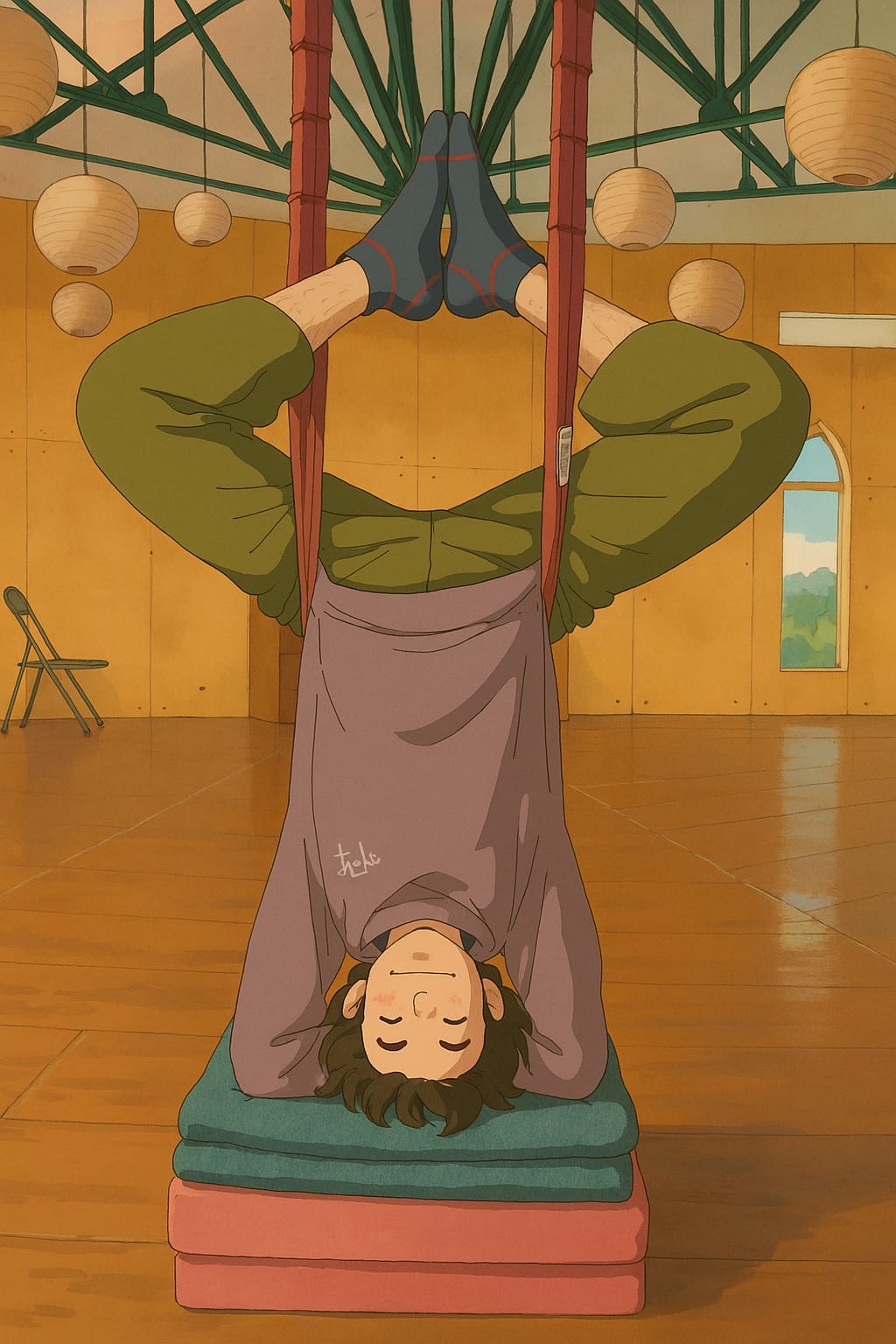

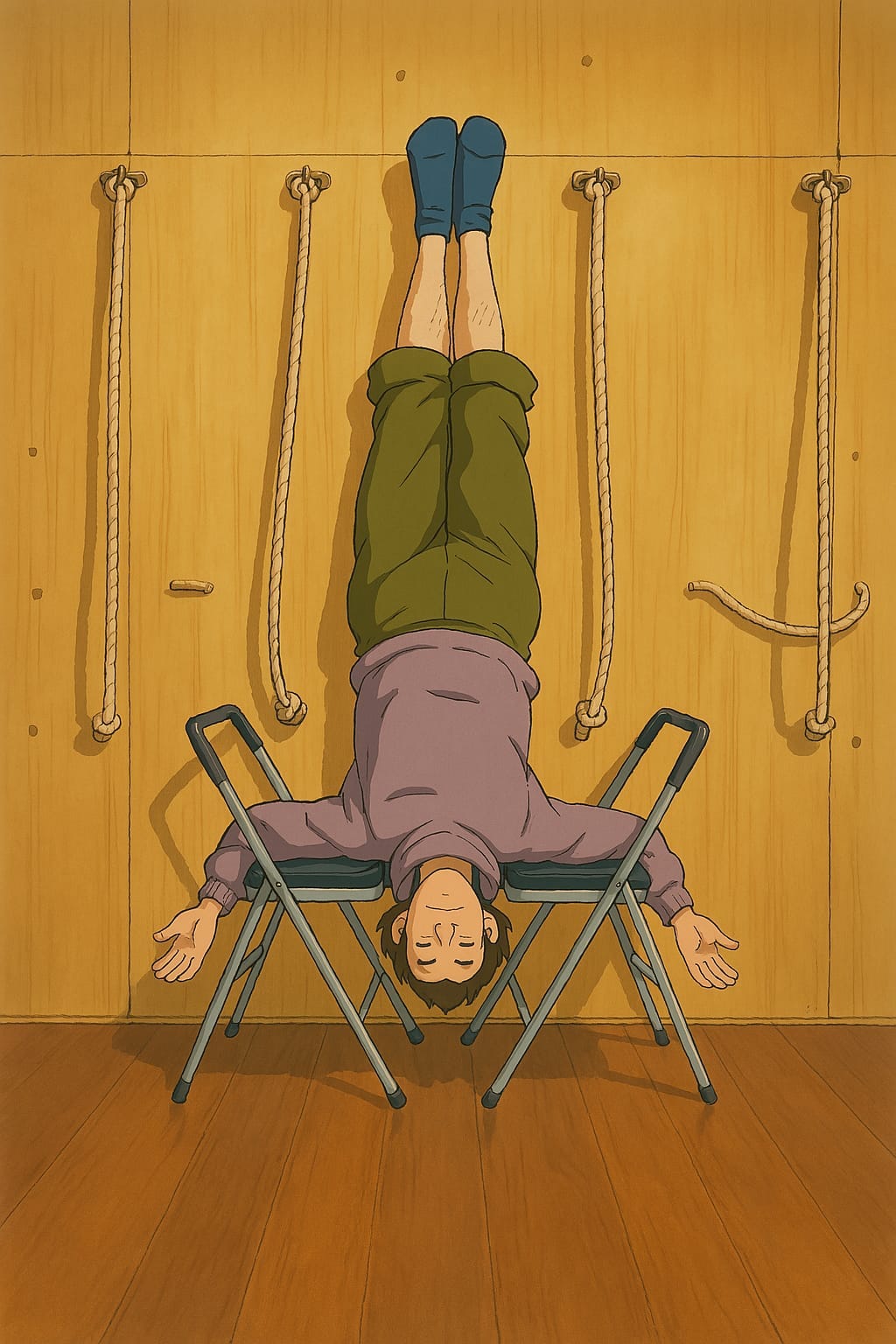
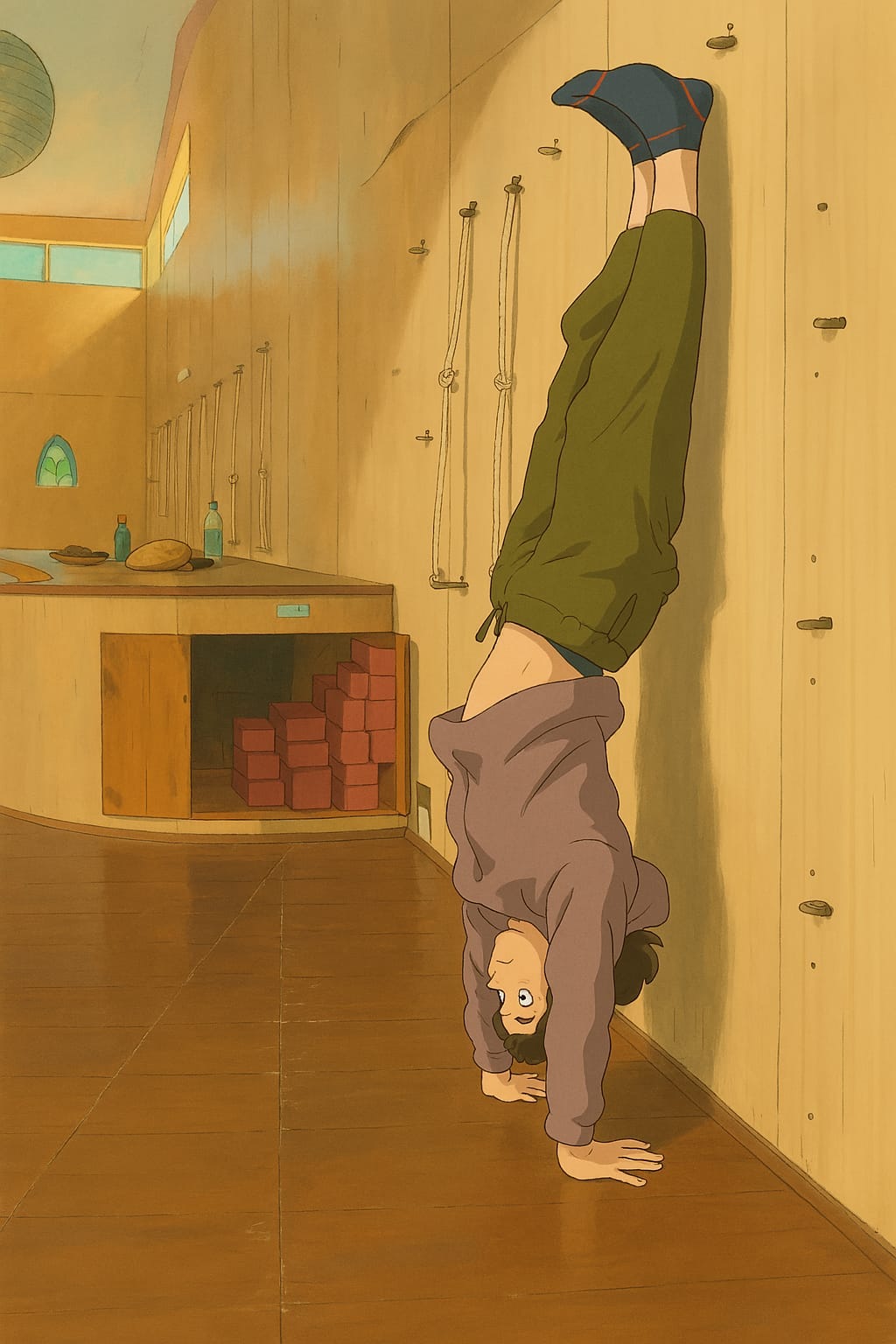
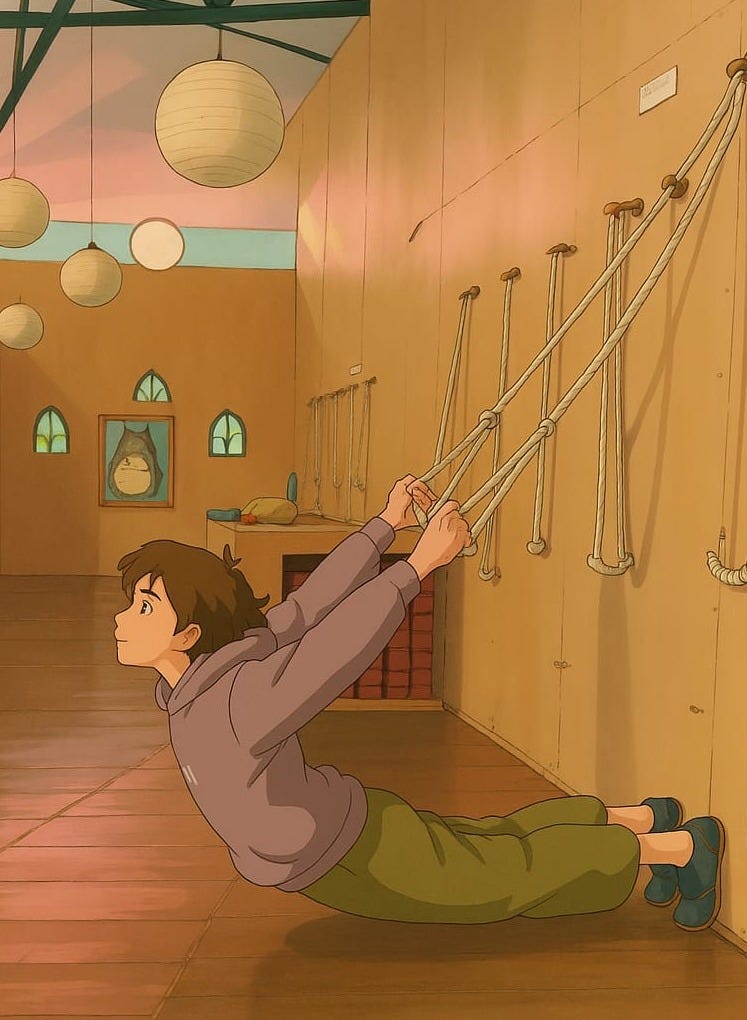


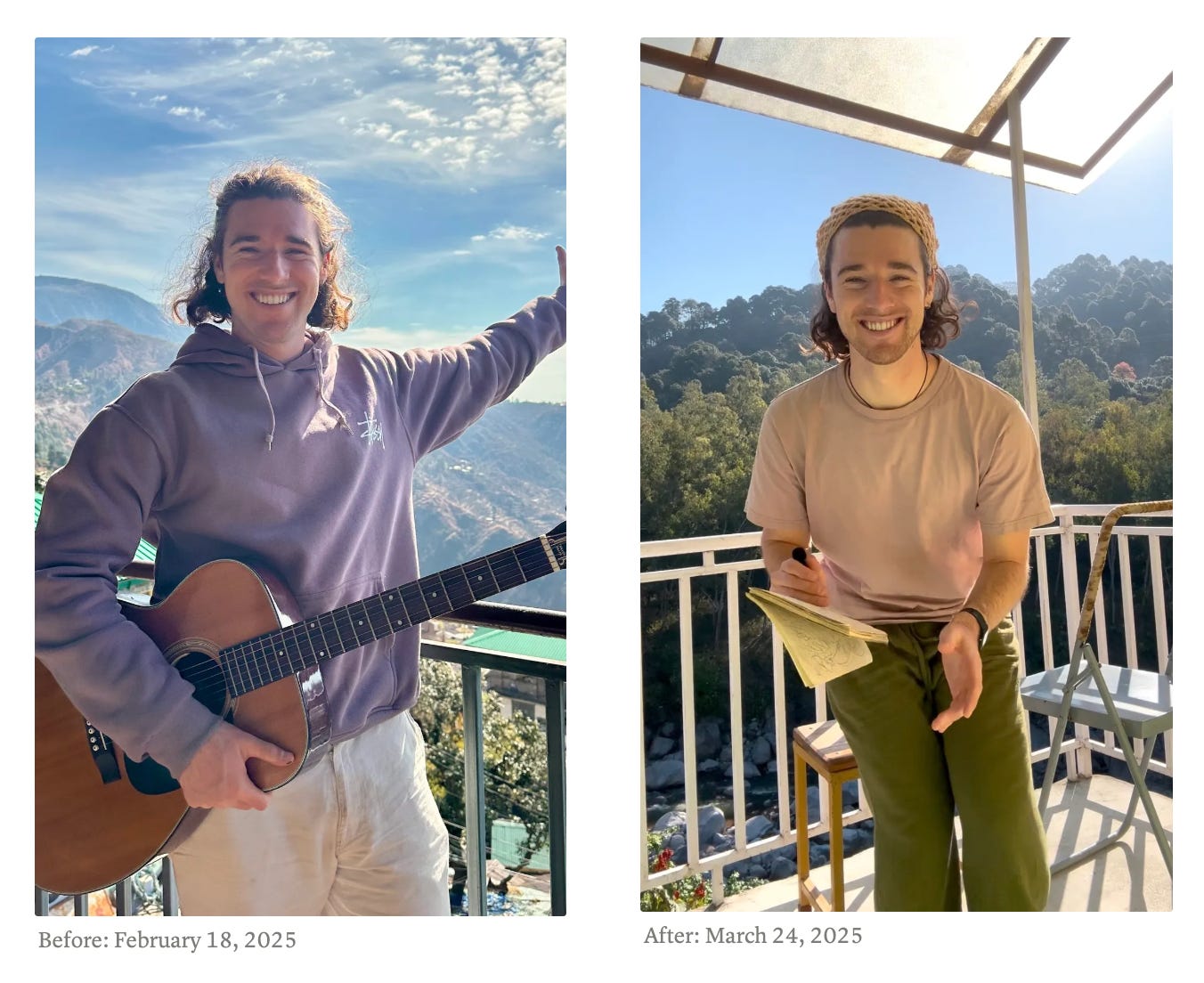

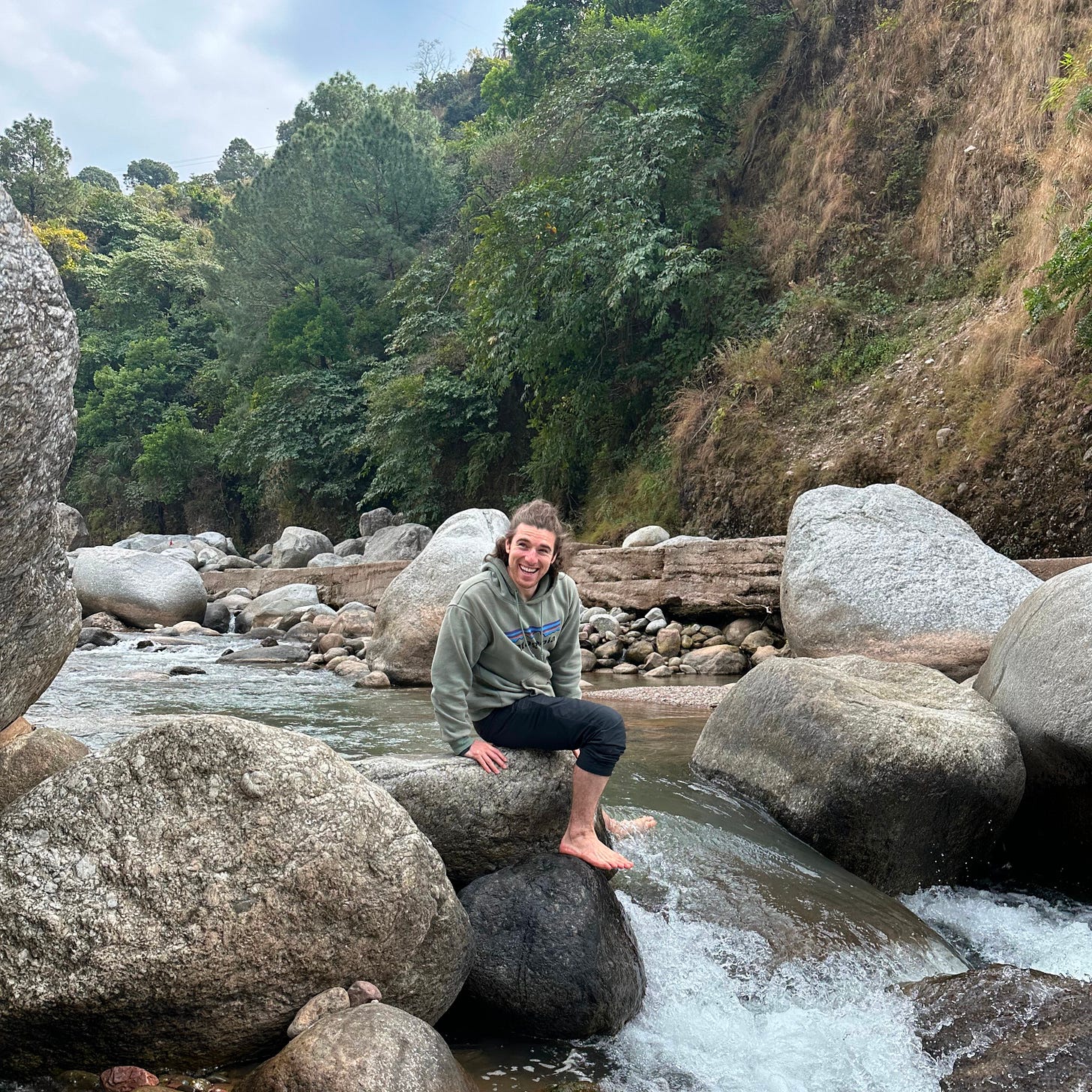
This was an effortless read. I felt I was inside experiencing this with you! Your insights speak through this and your new understanding of being present, of being more free of tension, of being comfortable with the unknown, will trickle out into the world and help others :)
Wow. A lovely post. Took me back to the time i did my intensive & TTC in the batch of 2023. Thank you for sharing!